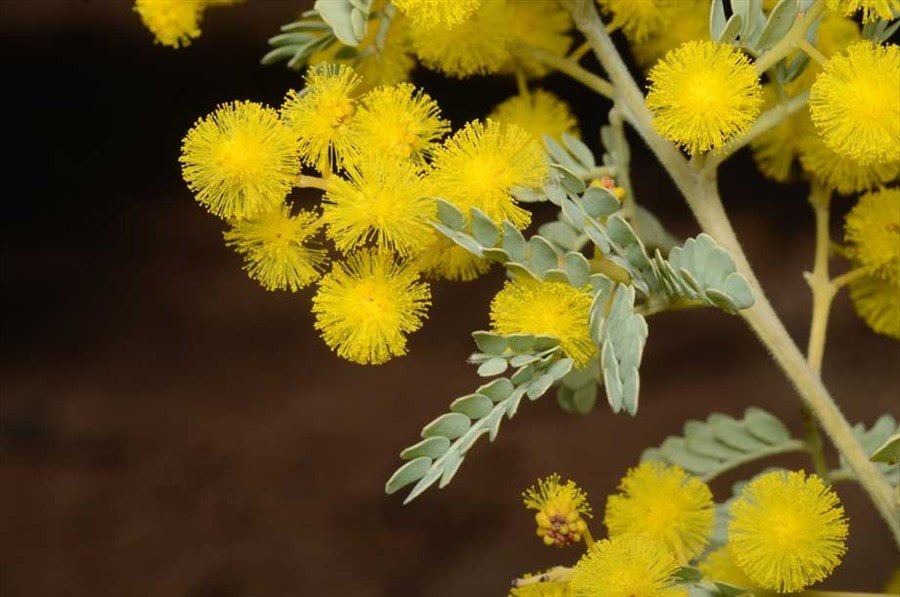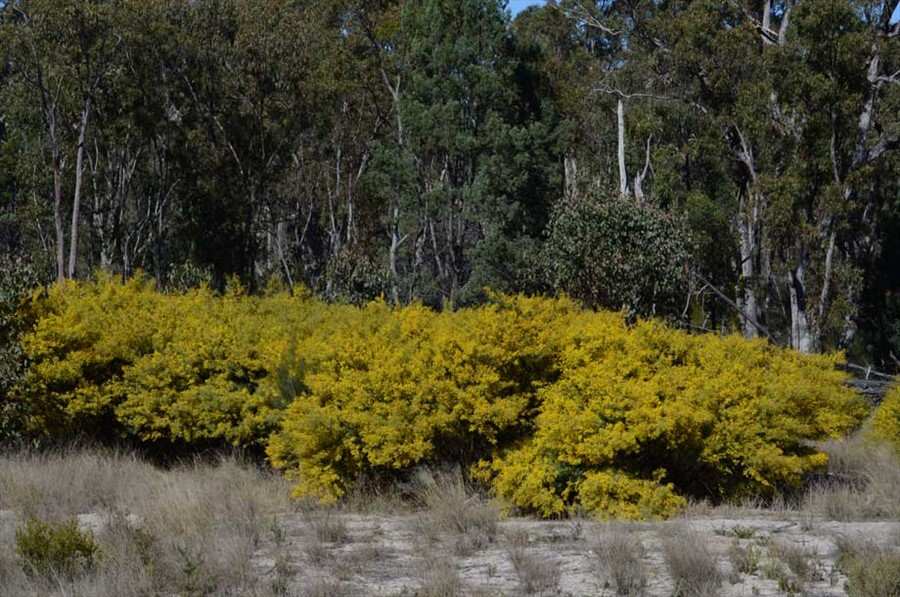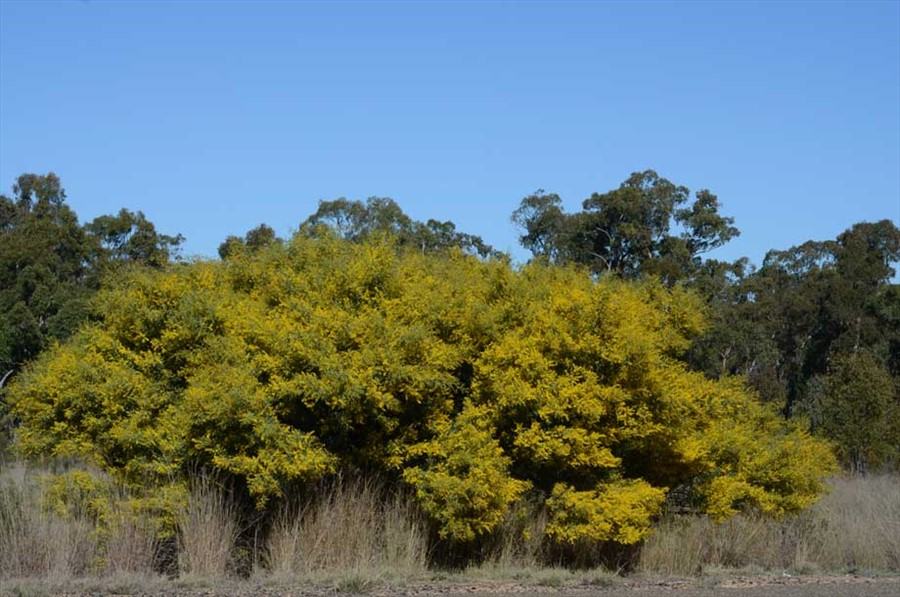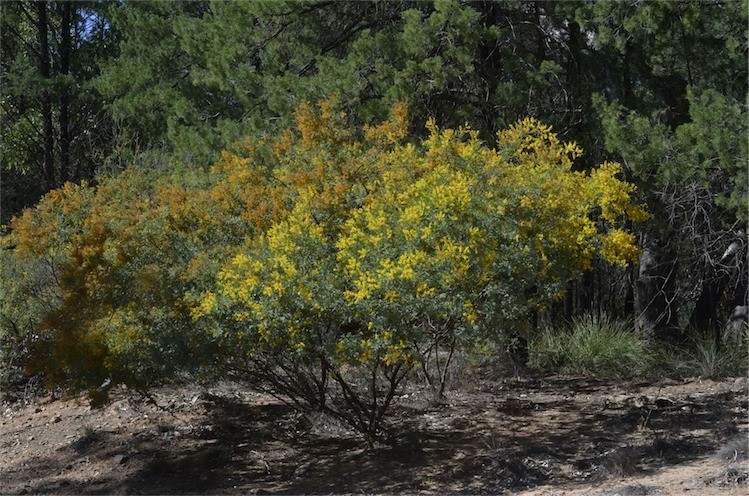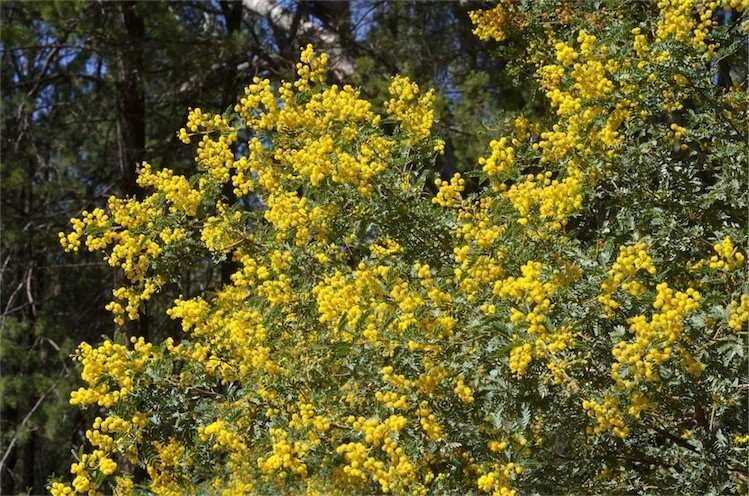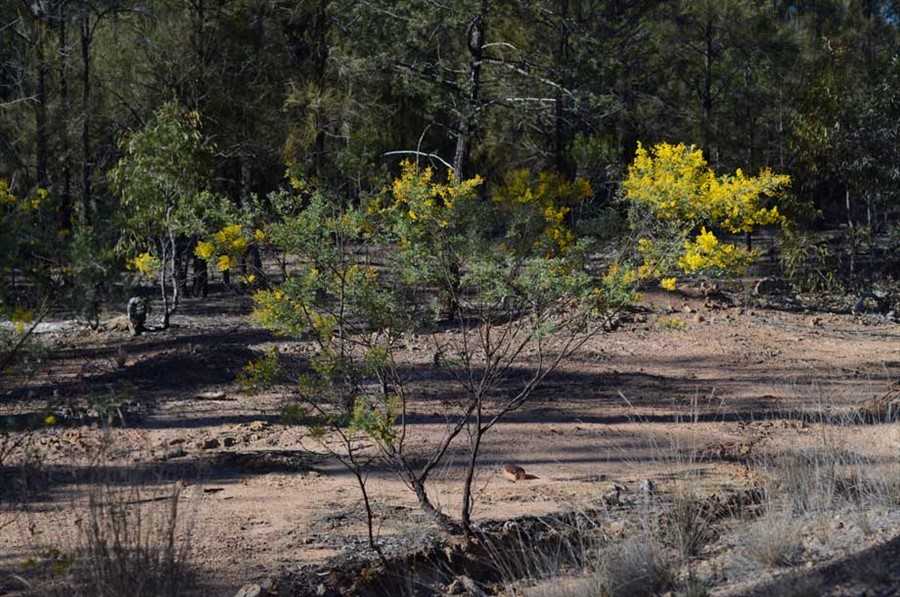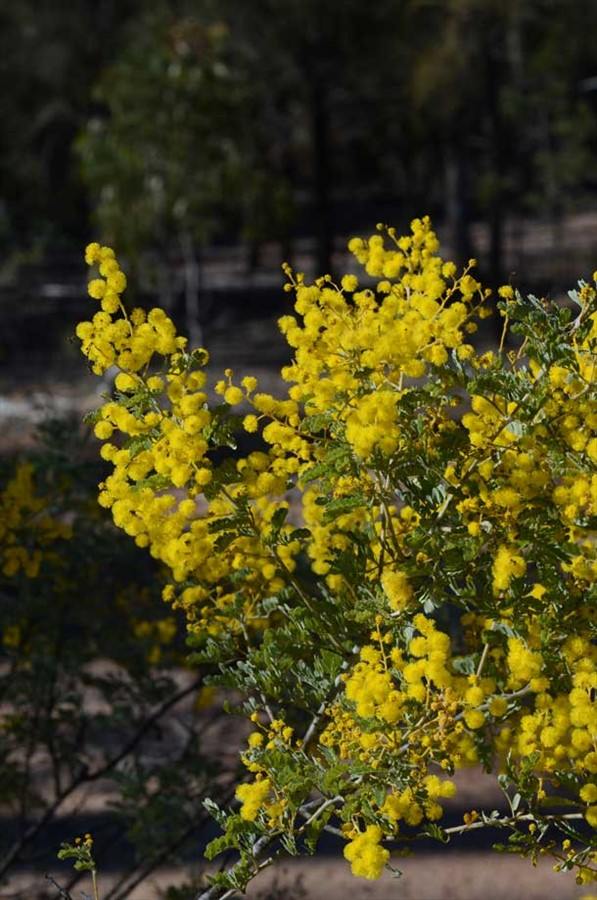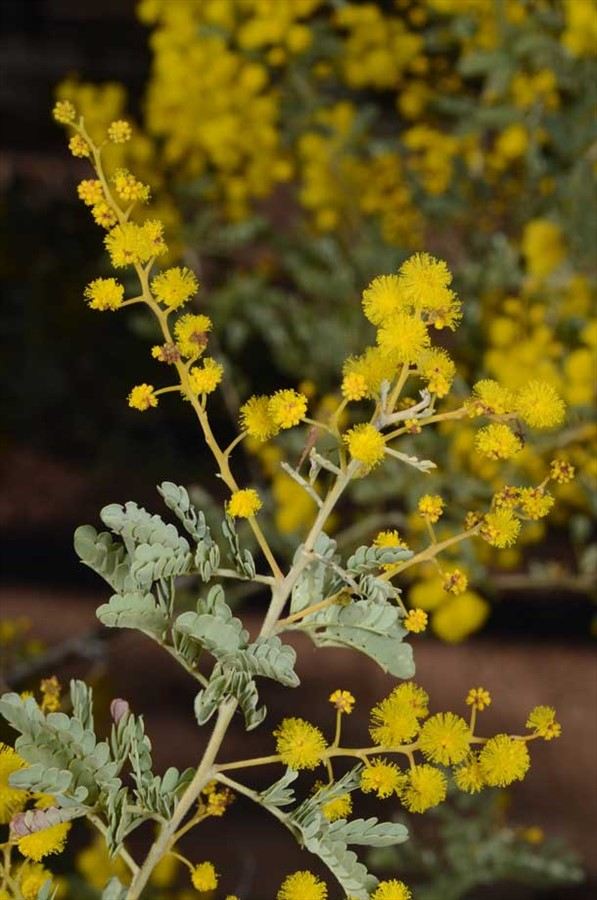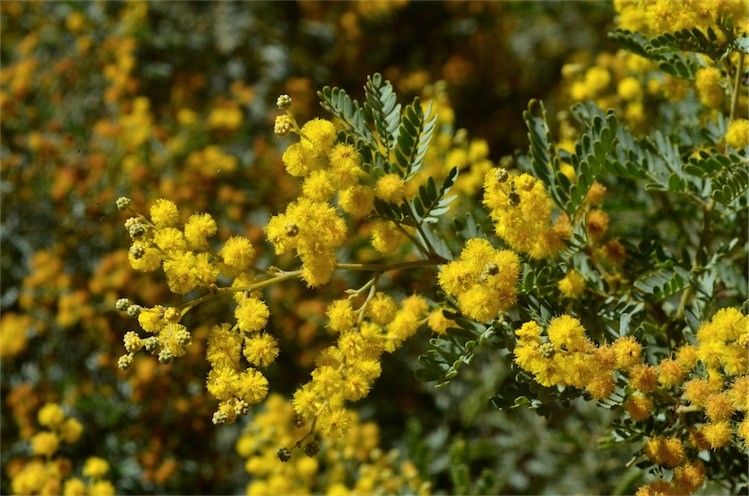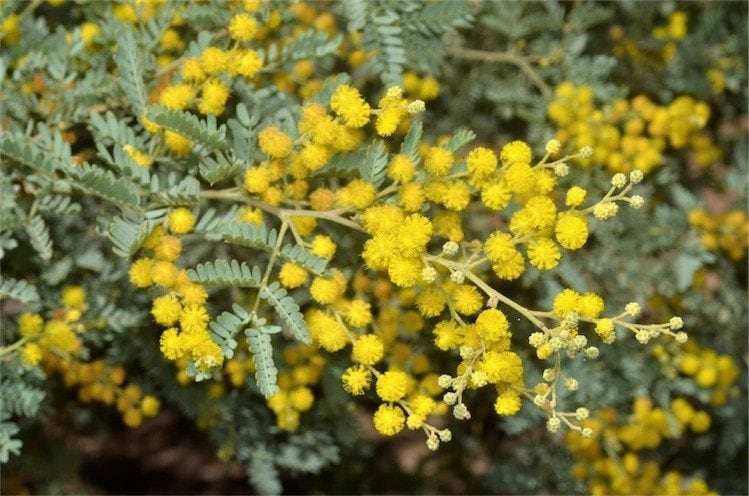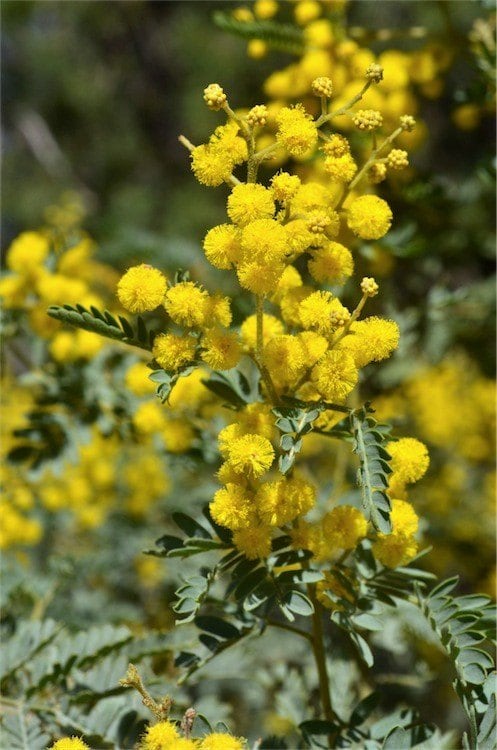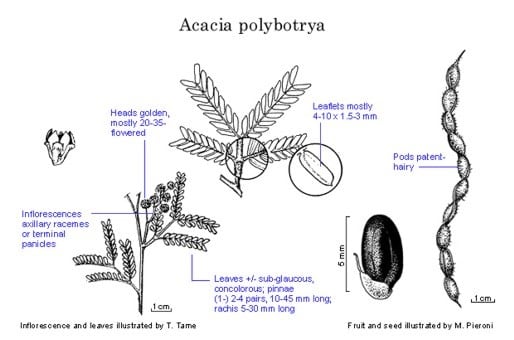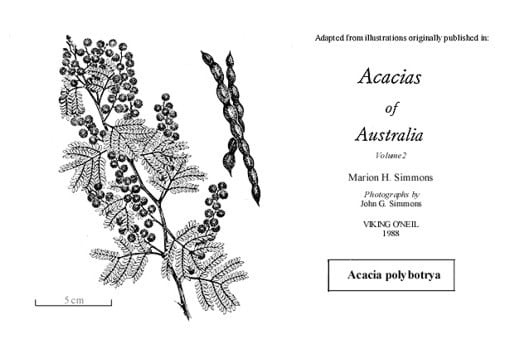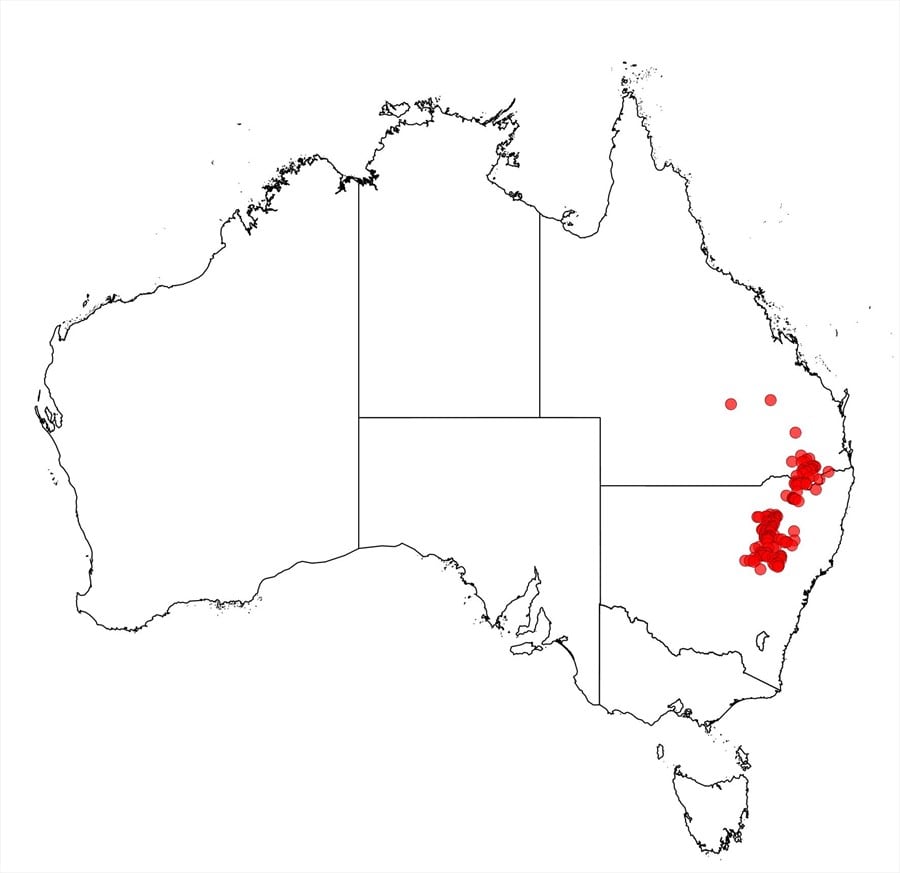Acacia polybotrya Benth.
WATTLE
Acacias of Australia
Common Name
Western Silver Wattle, Hairy Feather Wattle
Family
Fabaceae
Distribution
Extends from southern Darling Downs district, south-eastern Qld, to the North and Central Western Slopes and North Western Plains of N.S.W., S to Munghorn.
Description
Many-stemmed, flat-topped shrub 0.5–5 m high. Bark smooth, greenish grey. Branchlets ±terete, glabrous or with spreading hairs to 0.2 mm long. Young foliage-tips whitish or cream-coloured. Leaves subcoriaceous, blue-green; petiole above pulvinus 0.3–1 (–1.5) cm long, ±terete, finely ridged, glabrous or hairy, with a raised, orbicular gland at base of or near lowest pair of pinnae; rachis 0.5–3 cm long, ±terete, mostly with a small orbicular gland at base of uppermost pinnae; interjugary glands absent; pinnae (1–) 2–4 pairs, 1–4.5 cm long; pinnules 4–12 pairs, cultrate to oblong, sometimes ±lanceolate or obovate, (3–) 4–10 (–13) mm long, 1.5–3 (–4) mm wide, with a prominent percurrent nerve and 2 shorter nerves not reaching margin, glabrous or with long, spreading, white hairs, obtuse, markedly mucronulate. Inflorescences in axillary racemes or terminal false-panicles; axes often ±zig-zagged; peduncles (1–) 2–4 mm long. Heads globular, (12–) 20–35-flowered, golden. Pods ±moniliform, often twisted, 4–11 cm long, 3.5–8 (–10) mm wide, subcoriaceous, purplish brown to blackish brown, with long spreading hairs to glabrous; margins often incurved alternately around the seeds.
Phenology
Flowers July.–Oct.; fruits Nov. and Dec.
Habitat
Grows in open forest or shrubland, in infertile sandy, rocky or gravelly clay soils.
Specimens
Qld: 10.3 km N of Karara, R.G.Coveny 7246 & P.Hind (BRI, CANB, K, NSW); 5.5 km SW of Gore, M.D.Tindale 668 & D.Boyland (BRI, K, NSW, US). N.S.W.: ‘Wolaroi’, Castlereagh R., R.G.Coveny 10417 & D.Benson (CANB, CHR, K, MEL, NSW); 8 km NE of Coonabarabran, L.A.S.Johnson & B.G.Briggs 3041 (NSW); Black Munghorn, Wollar–Merriwa road, M.D.Tindale s.n. & C.K.Ingram (NSW60514).
Notes
Similar to A. spectabilis which has longer racemes, larger flower heads, wider legumes and usually only 1 gland. Closely allied to A. chinchillensis.
FOA Reference
Data derived from Flora of Australia Volumes 11A (2001), 11B (2001) and 12 (1998), products of ABRS, ©Commonwealth of Australia
Author
M.D.Tindale, P.G.Kodela
Minor edits by B.R.Maslin, J.Reid & J.Rogers
This identification key and fact sheets are available as a mobile application:
URL: https://apps.lucidcentral.org/wattle/
© Copyright 2018. All rights reserved.
